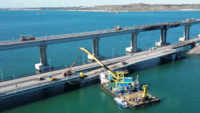Construction on a 250-MW hydroelectric powerplant in Nicaragua is slated to begin in November after financing for the $700-million project was lined up through a slate of Brazilian firms and regional organizations.
Earlier this year, a consortium led by Brazil’s state utility Centrais Eletricas Brasileiras (Eletrobras) and Centrales Hidroelectricas de Centroamerica (CHC)—a subsidiary of the Brazilian construction firm Queiroz Galvao—was awarded a 30-year, build-operate-transfer concession for the Tumarin hydroelectric facility on the Rio Grande de Matagalpa River, located northeast of the capital Managua.
When completed in 2014, the 60-meter-high dam will create a 55-sq-kilometer reservoir in Nicaragua’s south Atlantic autonomous region, Region Autonoma Atlantico Sur. The project includes the construction of a 50-km road between Rio Blanco and Mulukuku as well as a 81-km, 230-kv transmission line to connect the plant to the country’s transmission grid.
Financing was obtained through a throng of Brazilian interests. Brazil’s Banco de Fomento will provide $342 million, and the concessionaire agreed to provide another $206 million. The Central American Bank for Economic Integration put up another $252 million for the project.
Nicaragua sought the hydroelectric plant as a means to ease its dependence on oil-fired plants for electricity; currently, about 80% of the country’s electric power comes from oil. Government officials estimate the power from the Tumarin facility will be able to cut the country’s oil bill by $100 million annually.



Post a comment to this article
Report Abusive Comment